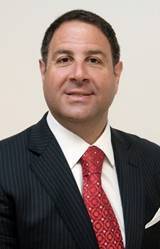by John Gallucci Jr., MS, ATC, PT, DPT, special to SportsMD.com

While most are in summer mode now, for those in the soccer world, Women’s World Cup, and the success of the U.S. team, has kept the sport top of mind. Once September hits, it will mark the kick-off of the Fall soccer season. Due to the jam-packed schedules filled with school, homework, practices and games of a student athlete, it is important to remember the following tips to keep the body working at peak performance levels:
Nutrition: Youth and teenage athletes must develop good eating habits that will last them a lifetime. This is the best time to introduce a healthy lifestyle, so they can make the connection between input and output; what we put into our bodies is directly linked to what we get out of our bodies. A bag of chips won’t get you through a 90-minute game in the hot afternoon sun. A few tips to remember: eat breakfast seven days a week, eat three to four balanced meals at the same time each day, have a nutritious mid-morning or mid-afternoon snack, eat two to three pieces of fresh fruit per day, eat four to five servings of fresh vegetables each day, eat lean, low-fat proteins (chicken, tuna, steak) at each meal, have a nutritious snack an hour before a workout (game or practice), have a nutritious snack 30-45 minutes post workout, and eat a well-balanced meal two to three hours before competition

Hydration. Our bodies crave water! This becomes especially true during periods of high intensity activity or extended heat exposure. For our bodies to function at high levels for extended periods of time, we need to start the day off well hydrated and continue to replenish fluids throughout the day as we lose them. Water consumption should begin 72 hours before activity by drinking six to eight, 8-ounce glasses of water per day. During activity, one should drink six ounces of fluid (preferably water) every 15 minutes and should then rehydrate following activity with 32 ounces of liquid per 1 pound of fluid loss.
A good night’s rest. Although sleep is most times overlooked when planning out a training regimen, it should be considered as equally important as nutrition and physical conditioning. Sleep experts have been studying the effects of sleep deprivation for many years and have determined that the lack of sleep affects the athlete greatly in the following ways:
- Slowed Reaction Times- Sleep studies on athletes have shown that a single “all-nighter” has decreased reaction times by up to 300%. With that in mind, imagine standing in front of a goal when the soccer ball comes flying at you! Slowed reaction times lead not only to missed pass or goal opportunities, but can result in injuries as well.
- Increased Injury Rates- While we sleep our bodies use this time to repair, regenerate and re-energize. After a long practice or game, when an athlete has fatigued their body and mind, sleep becomes crucial. Muscle fatigue and breakdown, which occurs after strenuous activity, needs adequate time to heal for the muscles to repair and regenerate before the next activity in order to refrain from injury. Elevated levels of cortisol, a stress hormone, has also been shown to interfere negatively with tissue repair and growth.

Stretching: Daily stretching is the only way to ensure that we are keeping our muscles strong, long, lean, and flexible. Without stretching, muscles can shorten, tighten and are more susceptible to tearing.
To increase one’s level of flexibility, I recommend that every athlete perform some sort of flexibility workout every day. However, it is important to note that flexibility does not happen overnight and that the athlete must stay committed to the process. During static stretching, which is typically performed following activity, each major muscle group should be stretched slowly and with control, holding each stretch for 1 to 3 sets of 30 to 60 seconds. Hold each stretch at the point of mild tension or tightness, not to the point of pain. Static stretching should not be done as a warm-up to an activity as you could injure your muscles if stretching them when they are cold.
During dynamic stretching, which is typically performed prior to athletic activity, the athlete should be actively engaged in activities such as jogging, sprinting, cutting and jumping to increase their heart rate and get the blood pumping to the muscles. An example of a dynamic warm-up program that is currently utilized at the youth, recreation, club and professional level is the FIFA 11 +. This program generally takes no longer than 20 minutes and consists of 15 dynamic exercises of running, strength, plyometrics and balance. The FIFA 11+, when performed properly and consistently, has been proven to reduce injury risk in the youth soccer athlete by 30-45 percent and the severity of injuries by 20-30 percent.
For more information in regard to soccer injury prevention, please be sure to check out Soccer Injury Prevention and Treatment: A Guide to Optimal Performance for Players, Parents, and Coaches written by John Gallucci Jr., MS, ATC, PT, DPT.
Cover Image: Pixabay/Skeeze

